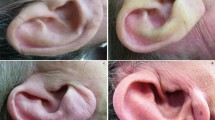Abstract
The role of EEG in confirming the clinical diagnosis of isolated brain death has undergone evolutionary changes since the original recommendations concerning its use. Accumulated evidence now supports that approach that the EEG can be used not only as a confirmatory test for brain death, but one which considerably facilitates making the diagnosis. Using the EEG, brain death can often be identified with absolute certainty within just a few, rather than the previously recommended 24 or more hours after a known precipitating event. Guidelines to this effect have now been established.
Similar content being viewed by others
Author information
Authors and Affiliations
Rights and permissions
About this article
Cite this article
Wilkus, R.J. The EEG as confirmatory evidence of brain death: Previous and current approaches. Bioethics Quarterly 2, 39–45 (1980). https://doi.org/10.1007/BF00917055
Issue Date:
DOI: https://doi.org/10.1007/BF00917055




